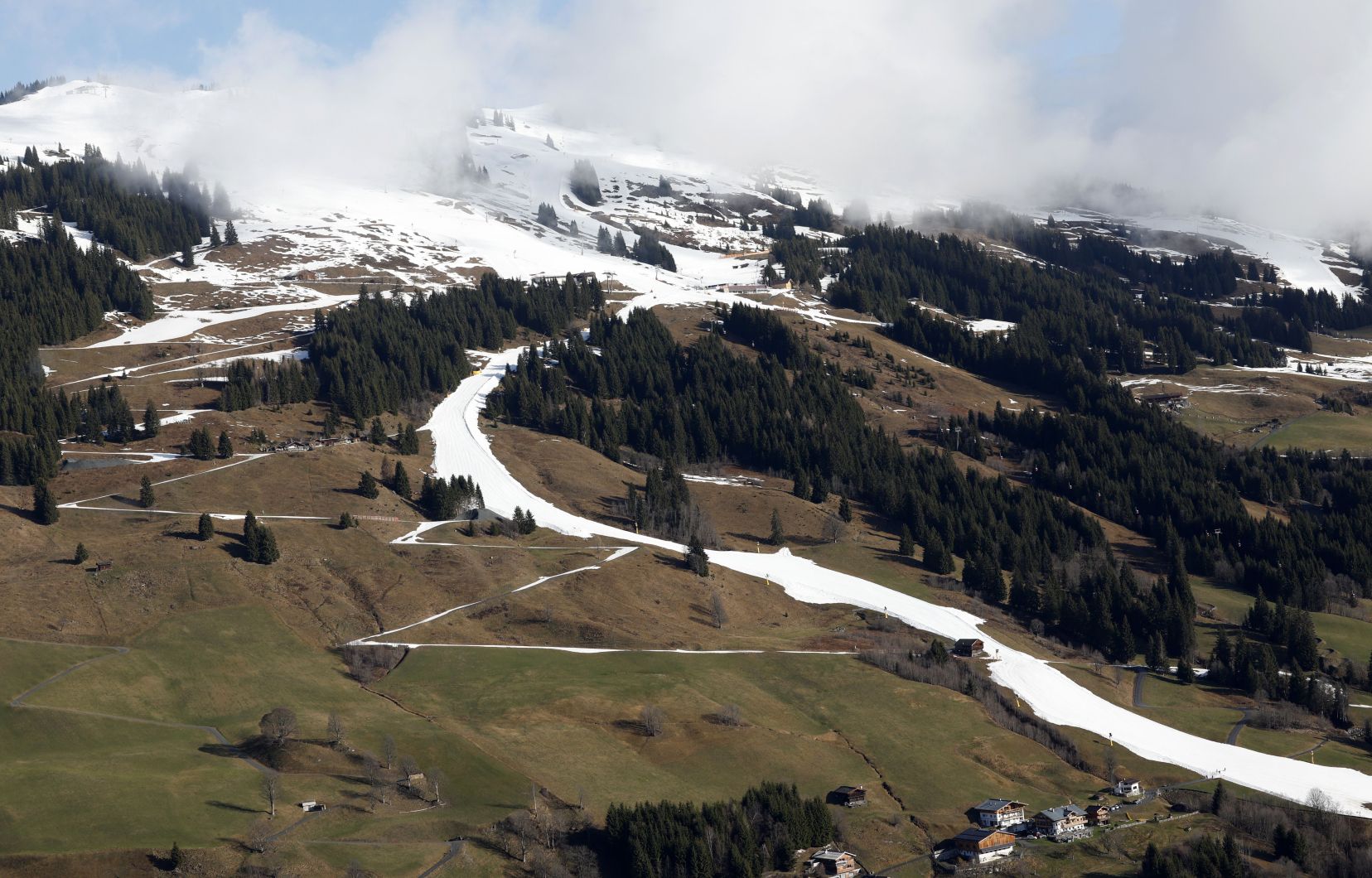Climate change is “an existential threat” to winter sports and to tackle it, the world skiing governing body has joined forces with the UN weather organization to benefit from its expertise.
Ski resorts around the world are increasingly faced with the realities of a warming climate, its lack of snow, its shorter seasons and its economic repercussions for regions that rely on winter tourism.
The International Ski and Snowboard Federation (FIS) therefore hopes that its cooperation with the World Meteorological Organization (WMO), announced on Thursday, will help it give a future to winter sports.
“The climate crisis is obviously not restricted to the FIS – nor to sport, for that matter: it places humanity at a crossroads, neither more nor less,” underlines FIS President Johan Eliasch in a press release. .
But “to put it simply, it is true that climate change is an existential threat to skiing and snowboarding” and “we would be failing in our duty if we did not do everything possible” to take into account the lessons of science and “objective analyses”, explains the man for whom questions of environmental protection are not a discovery.
Swedish-British multi-billionaire businessman and environmentalist Johan Eliasch previously served as former British Prime Minister Gordon Brown’s special representative on deforestation and clean energy.
No racing
Climate change poses a serious challenge to skiing, which already uses artificial snow almost systematically for most World Cup races, World Championships and Olympics.
During the 2023-2024 season, FIS organized 616 World Cup races across all disciplines, at 166 venues. The famous “white circus”, also criticized for these constant trips which increase the carbon bill of competitions.
Twenty-six races were canceled last season for weather-related reasons.
At the Beijing 2022 Winter Olympics, the alpine skiing events took place in a drought-affected region and the slopes were generated entirely with artificial snow. A practice, which consumes a lot of water, which had been roundly criticized by environmental protection organizations.
The WMO, which is joining forces for the first time with an international sports federation, and the FIS want to work together to show the impact of rising temperatures on snow and ice, and find practical ways to stimulate the dialogue between science and sport.
“Wasted winter holidays and canceled sporting events are only the tip of the iceberg” in terms of climate change, underlines WMO Secretary General Celeste Saulo.
“The retreat of glaciers, the reduction in snow and ice cover and the thawing of permafrost are currently having repercussions on mountain ecosystems, populations and economies that will worsen locally, nationally and globally in the centuries to come,” she adds.
Ice world, hot topic
On November 7, WMO and FIS will host a webinar for all 137 national ski associations, as well as venue managers and event organizers, on climate change and its potential impact on snow, ice and winter sports.
It will include an overview of advances in forecasting tools to support the optimization of snow management around ski resorts.
Earlier this year, the WMO Executive Council decided to make the cryosphere — the frozen parts of the Earth — one of its top priorities, amid growing concerns about melting snow, ice and permafrost.
About 70% of Earth’s fresh water exists as snow or ice, and about 10% of land is covered by glaciers or ice sheets, meaning changes in the cryosphere will affect the entire the planet.
